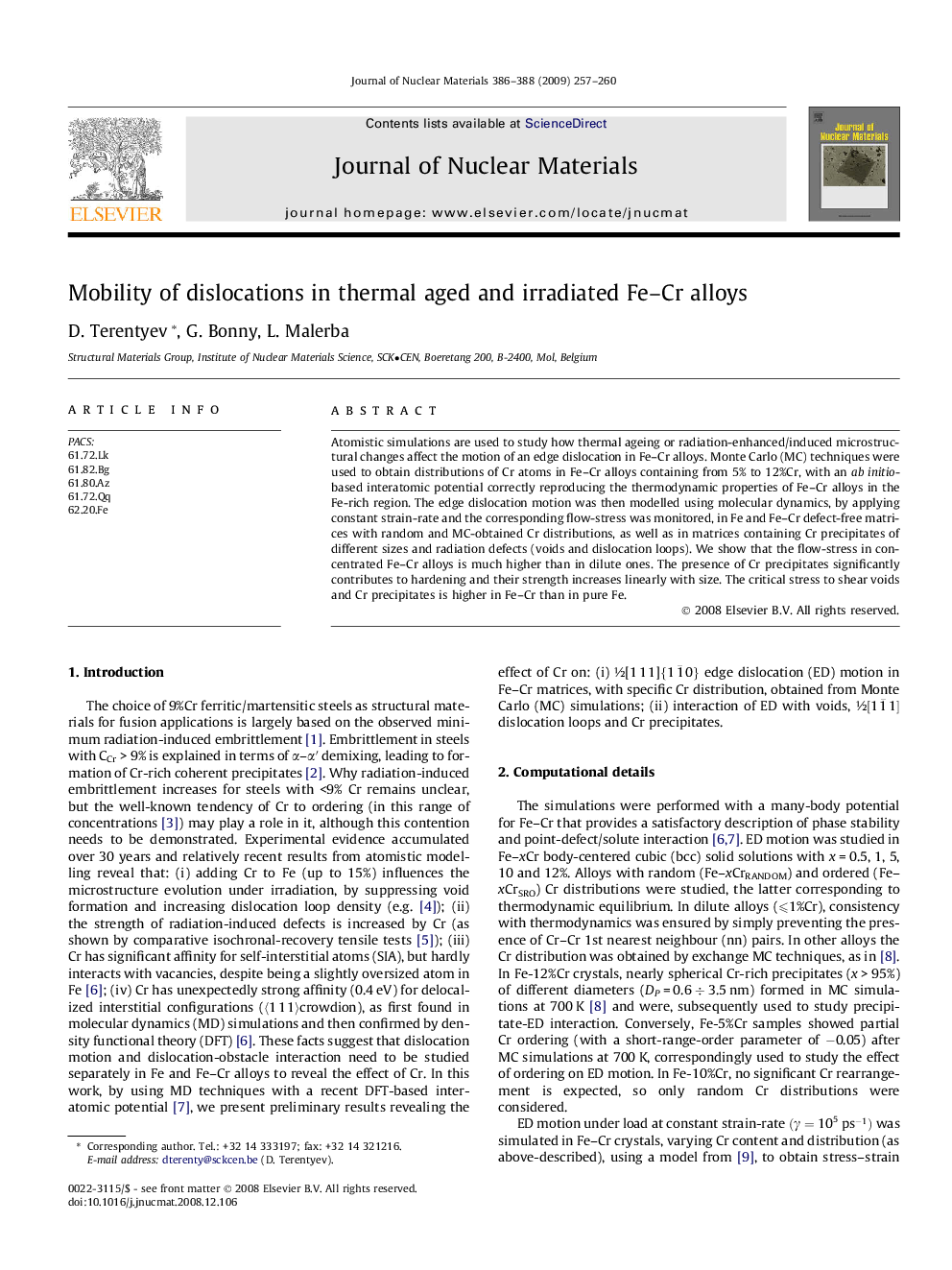| Article ID | Journal | Published Year | Pages | File Type |
|---|---|---|---|---|
| 1567937 | Journal of Nuclear Materials | 2009 | 4 Pages |
Abstract
Atomistic simulations are used to study how thermal ageing or radiation-enhanced/induced microstructural changes affect the motion of an edge dislocation in Fe-Cr alloys. Monte Carlo (MC) techniques were used to obtain distributions of Cr atoms in Fe-Cr alloys containing from 5% to 12%Cr, with an ab initio-based interatomic potential correctly reproducing the thermodynamic properties of Fe-Cr alloys in the Fe-rich region. The edge dislocation motion was then modelled using molecular dynamics, by applying constant strain-rate and the corresponding flow-stress was monitored, in Fe and Fe-Cr defect-free matrices with random and MC-obtained Cr distributions, as well as in matrices containing Cr precipitates of different sizes and radiation defects (voids and dislocation loops). We show that the flow-stress in concentrated Fe-Cr alloys is much higher than in dilute ones. The presence of Cr precipitates significantly contributes to hardening and their strength increases linearly with size. The critical stress to shear voids and Cr precipitates is higher in Fe-Cr than in pure Fe.
Related Topics
Physical Sciences and Engineering
Energy
Nuclear Energy and Engineering
Authors
D. Terentyev, G. Bonny, L. Malerba,
